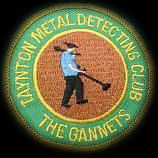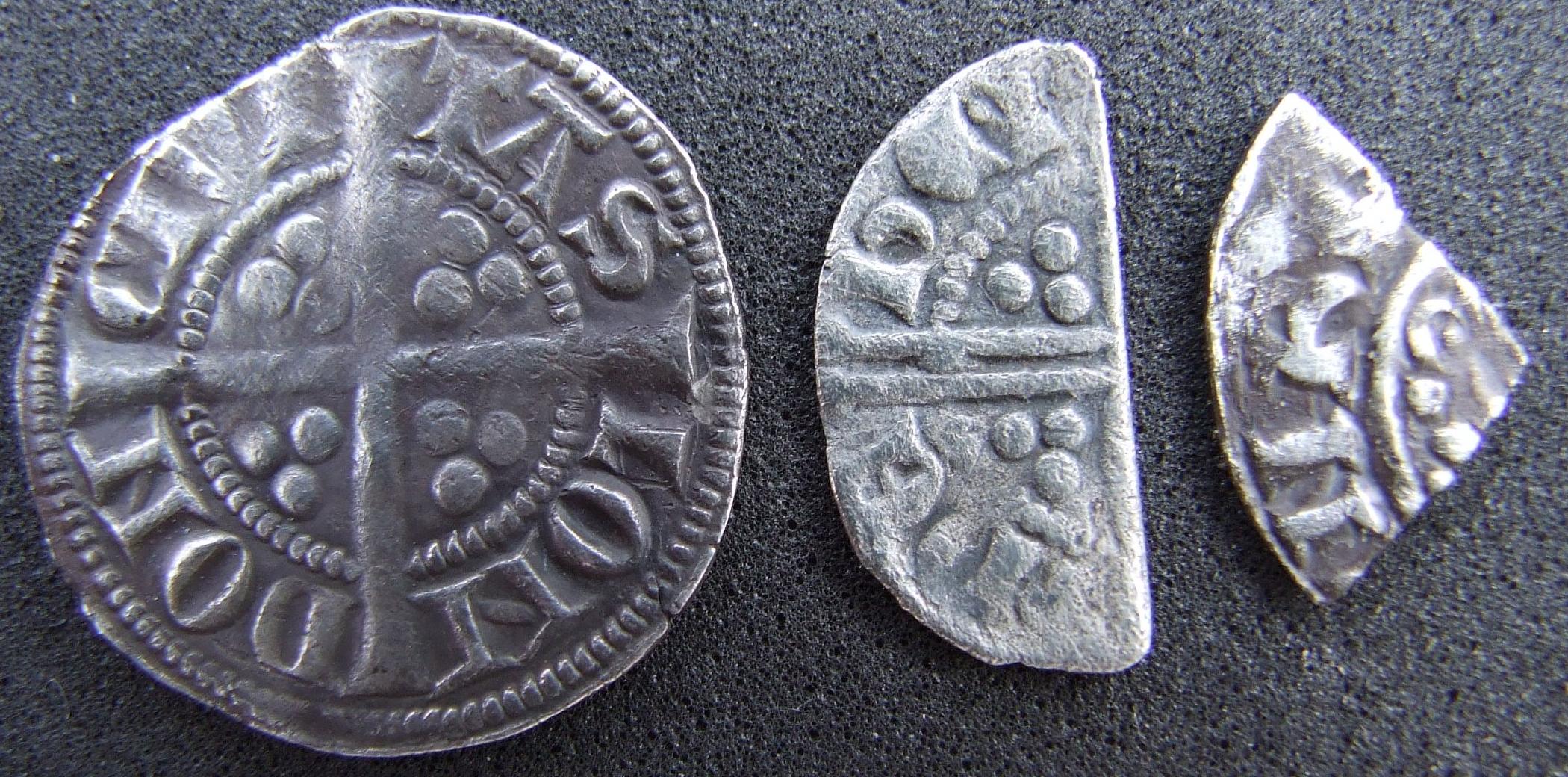
Coins
Introduction
Ancient Coins
Celtic
Roman Hoard
Roman C1st
Roman C2nd
Roman C3rd
Roman C4th
Recording
Medieval Coins
Saxon & Norman
Short Cross
Voided Long Cross
Long Cross
Nobles & Groats
Medieval Hoard
Later Coins
Early Tudor
Elizabethan
Stuart
Early Milled
Georgian
Victorian
Forgeries
Taynton Metal Detecting Club
The Gannets
Introduction to Coins
Hammered and Milled
Old coins are classified as 'hammered' or 'milled'. Hammered coins were made by hand striking a die with a hammer. Milled coins were made by machine. The first type of coin machine was the 'mill and screw press', and the term 'milled' has stuck for all machine made coins.
Celtic Coins
Celtic coins are very rare and their denominations are not known. They were only produced in the hundred years before the Roman invasion. The Taynton area belonged to the Dobunni tribe and the club has found several of their coins.
Roman Coins
During the period Britain was part of the Roman Empire three different denominations of coin were in use
|
|
|
|||||||||||||||||||||||||||||||||||||||||||||||||||||||||||||||
Saxon Coins
Saxon Coins are very rare. The first native Saxon coin was gold and called a Thrymsa. Thrymsas were minted from about 630 to 675, when they were replaced by a silver penny, known today as a Sceatta.
Medieval Coins
At the start of the medieval period the Normans adopted the existing Saxon mints with the penny remaining the only coin. The penny was made with a cross on its back to facilitate the coin being cut into halves or quarters to make half-pennies and farthings. Farthing means 'a fourth part' in old English.

Medieval Penny, Half-Penny and Farthing (Fourth-Penny). Found by club member Mark Powles.
Later in the period higher denomination coins arrived, including the groat and the noble.